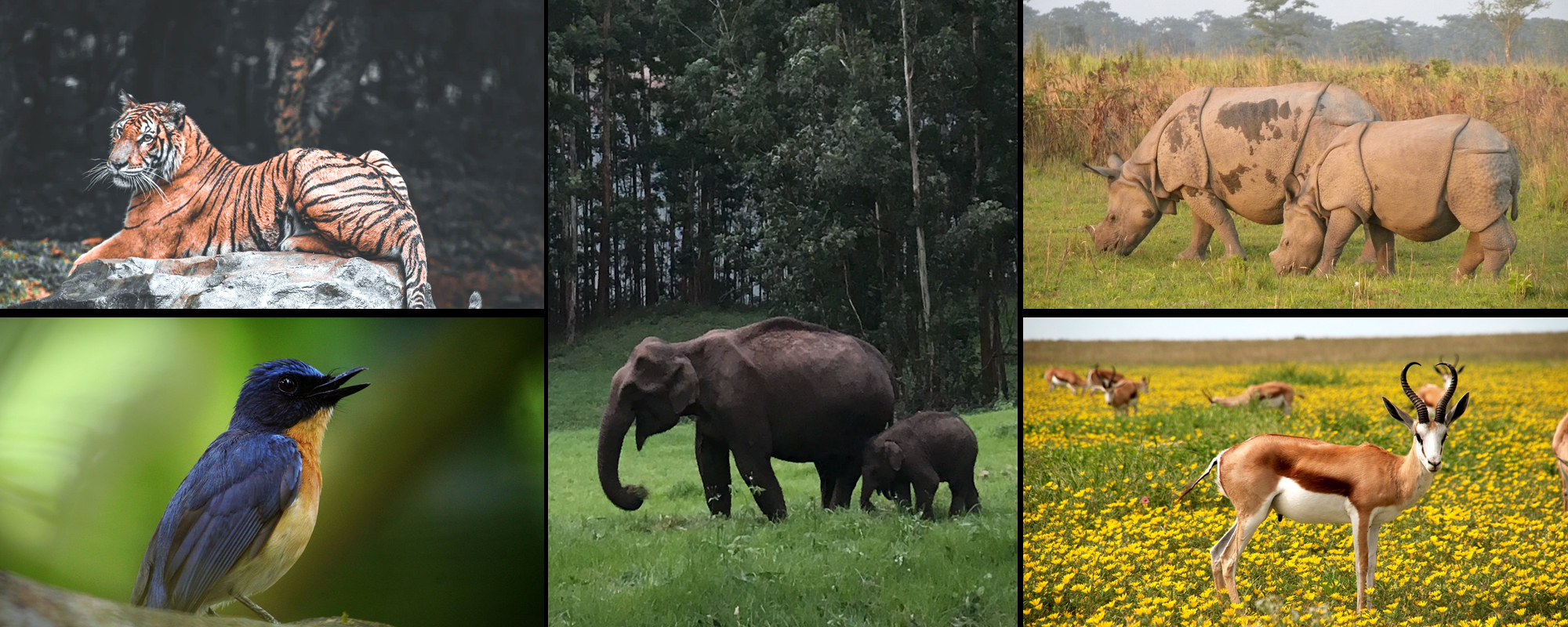
Situated in the Yamuna Nagar district in Haryana, Kalesar National Park is a beautiful location with a diverse variety of flora and fauna and an excellent tourist spot. At a distance of 150km from Chandigarh, Kalesar National Park is located in the foothills of the Shivalik ranges of the Himalayas. An ideal spot for nature enthusiasts and bird watchers, Kalesar National Park never ceases to amaze the visitors with the exquisite and exotic bird species present here.
The park was declared a Wildlife Sanctuary in 1996 and then eventually in the year 2003, this Wildlife Sanctuary was given the status of a National Park spanning across an area of 46.82sq. kilometers. The park has an old temple dedicated to Lord Shiva inside its premises which are known as Kalesar Temple, after which the park has been named. It also has century-old colonial dak bungalows dating back to the 1900s which attract the attention of the visitors. The dominant features of the bungalow are high ceilings, teak panelings, unique parquet flooring, and antique furniture. A fireplace combined with a mantelpiece over it completes this periodical setting. The landscape is laid with diverse bio-diversity having thick Sal woodland, Khair woodland, and the casings of sward lands, which supports a rich diversity of flora and fauna.
The park shares its border with three other states which are Himachal Pradesh, Uttarakhand, and Uttar Pradesh. The Yamuna River forms the eastern boundary with Uttar Pradesh and the main Shivalik ridge separates the state boundary of Haryana from Himachal Pradesh and Uttarakhand in the north. Kalesar National Park is of great importance in terms of biodiversity and ecological stability in this region of the country. The park is home to a multitude of medicinal plants and herbs and a rich variety of fauna such as Leopards, Barking Deer, Chital, King Cobra, etc. Apart from the wildlife sighting, visitors can also enjoy their day engaging in a number of activities such as trekking, fishing, sightseeing, swimming, and safari.
The majority of the park is covered with dense forest, open forest and scrubs complete the remaining landscape. Khair, Jhingan, Semul, Bahera, Sain, Chhal, Sal, Shisham, Dhak, Kachnar, Amaltas, Tun, Amla, etc. The Sindoor tree (from which vermillion sindoor is extracted) is also found here.
Mammals: Nilgai, Rhesus Macaque, Barking Deer, Wild Boar, Leopard, Jackal, Asiatic Elephant, Indian Crested Porcupine, Common Palm Civet, Gray Langur, Indian Gray Mongoose, Nilgai, Ghoral, Sambar, Hare, etc Occasionally, Tigers and Elephants are also spotted here who visit the area from Rajaji National Park.
Birds: The Tree Pie, Hornbill, Blue Peafowl, Drongo, Partridges, etc.
Reptiles: Python, King Cobra, Monitor Lizard, etc.
The weather here is mostly dry deciduous with winters beings cold and the temperature ranging from 7 degrees Celsius to an average high temperature of 19 degrees Celsius in January and the summers being scorching hot with the temperature as high as 40 degrees Celsius.
The best time to make a visit to this national park is between the months of October and March when the weather is cold and breezy and not too scorching to interrupt your excursion with seldom rainfall.
Nearest Train Station: The nearest railhead is Yamunanagar (Jagadhar) railway station, about 37km from the park. You can find taxis and buses from the station to the park.
Nearest Airport: The nearest airport is Chandigarh airport, at a distance of 87km from the national park, the airport is well-connected by road network to Kalesar National Park
Road Accessibility : Kalesar National Park is well-connected to a well-maintained road network to major cities and places of the country. There are a number of government and privately operated vehicles that go to Kalesar National Park at frequent intervals.
Copyright 2012-2022 Indiamap Digital Pvt Ltd. All rights reserved. Privacy Policy | Terms of Use